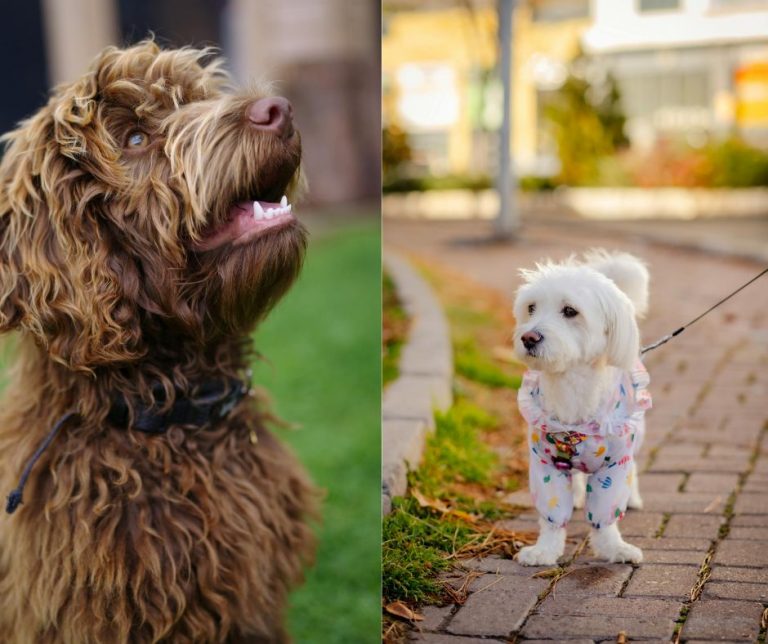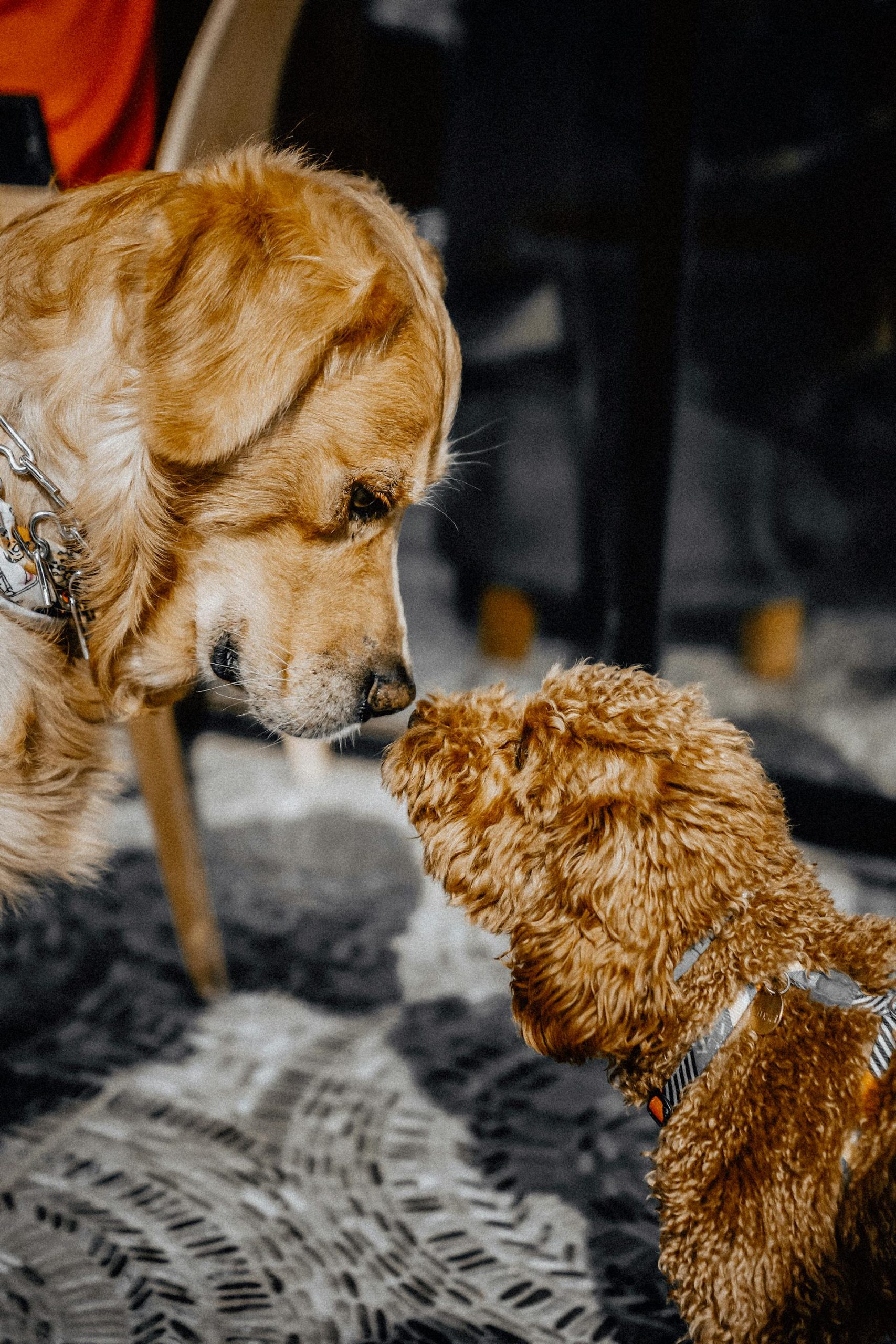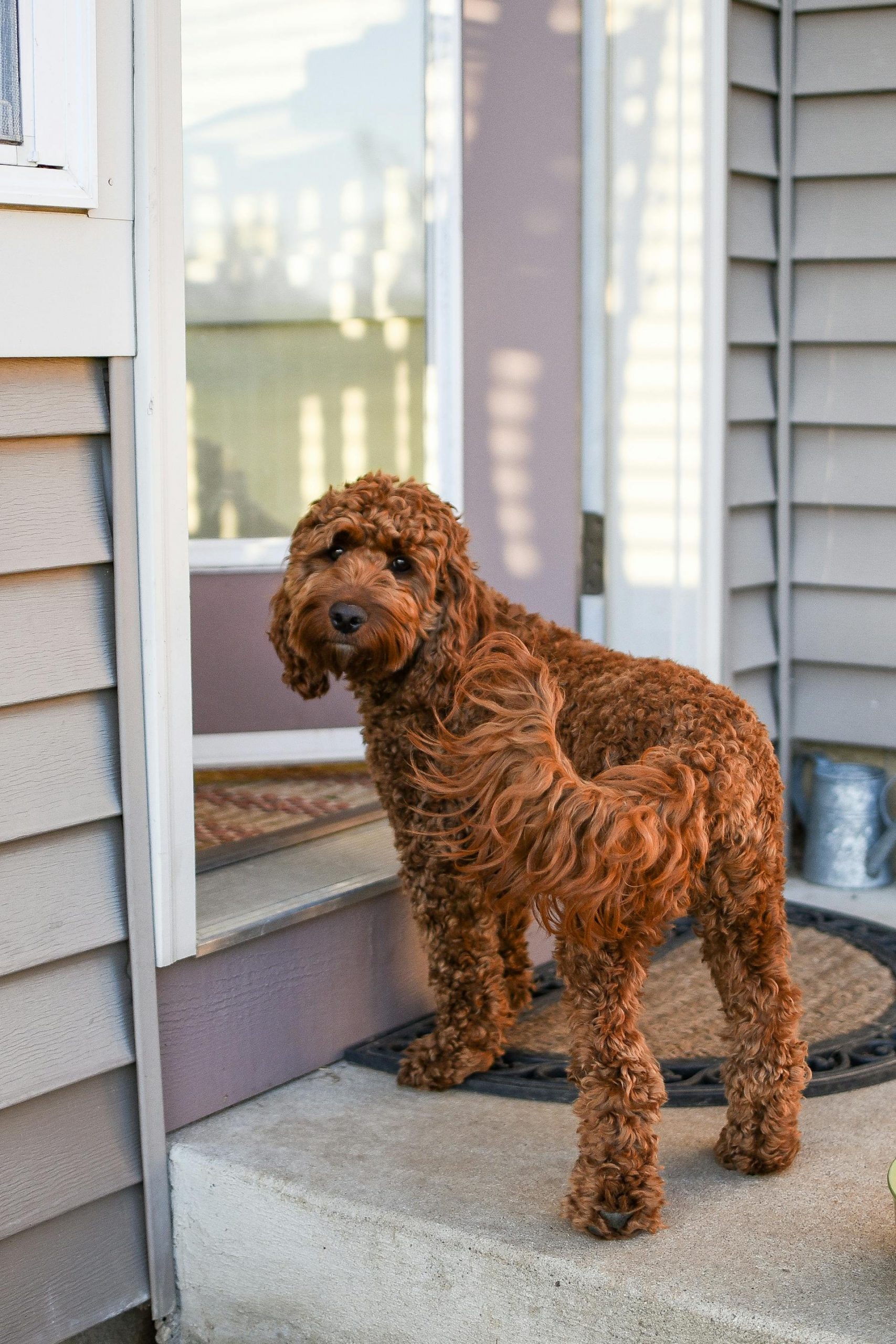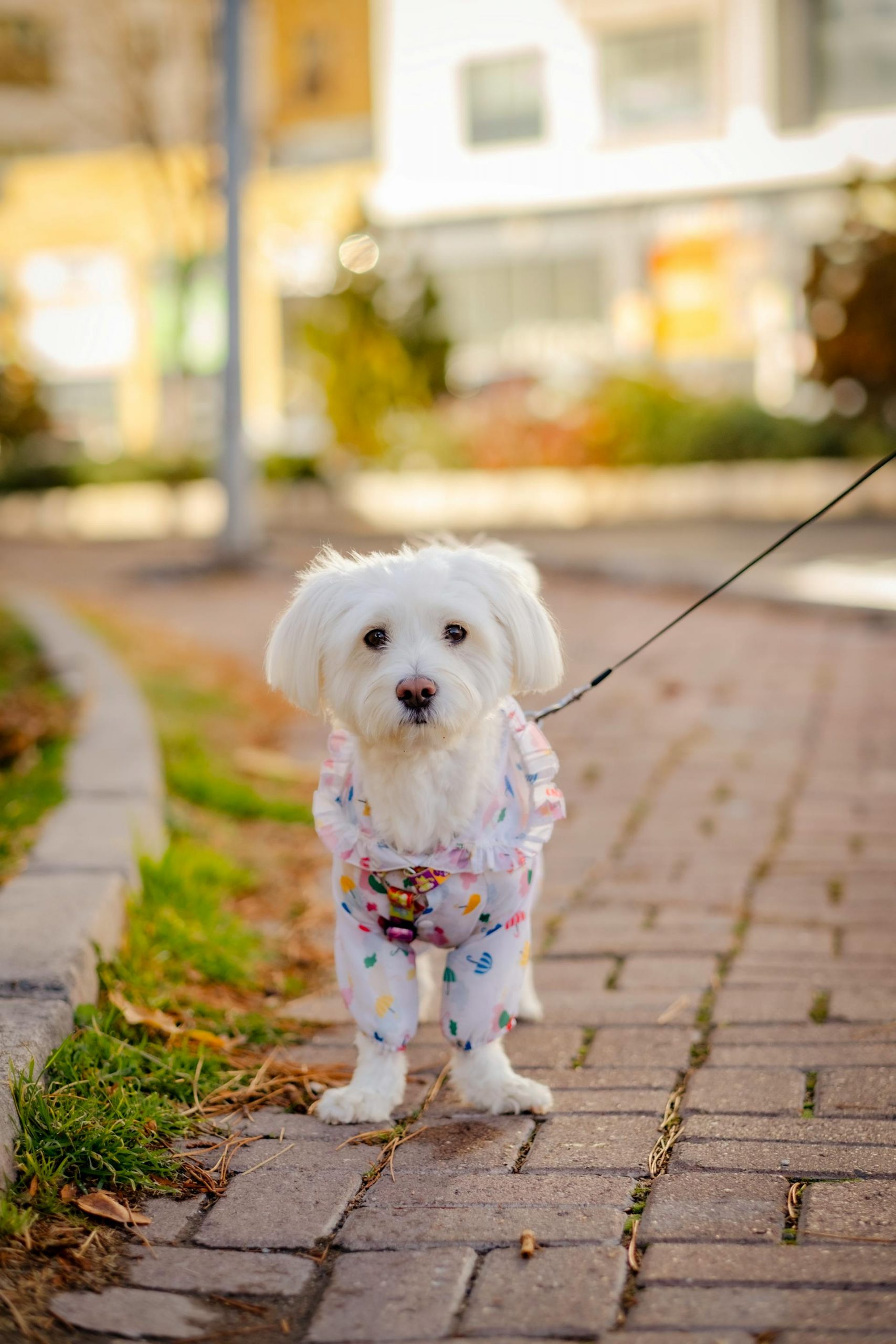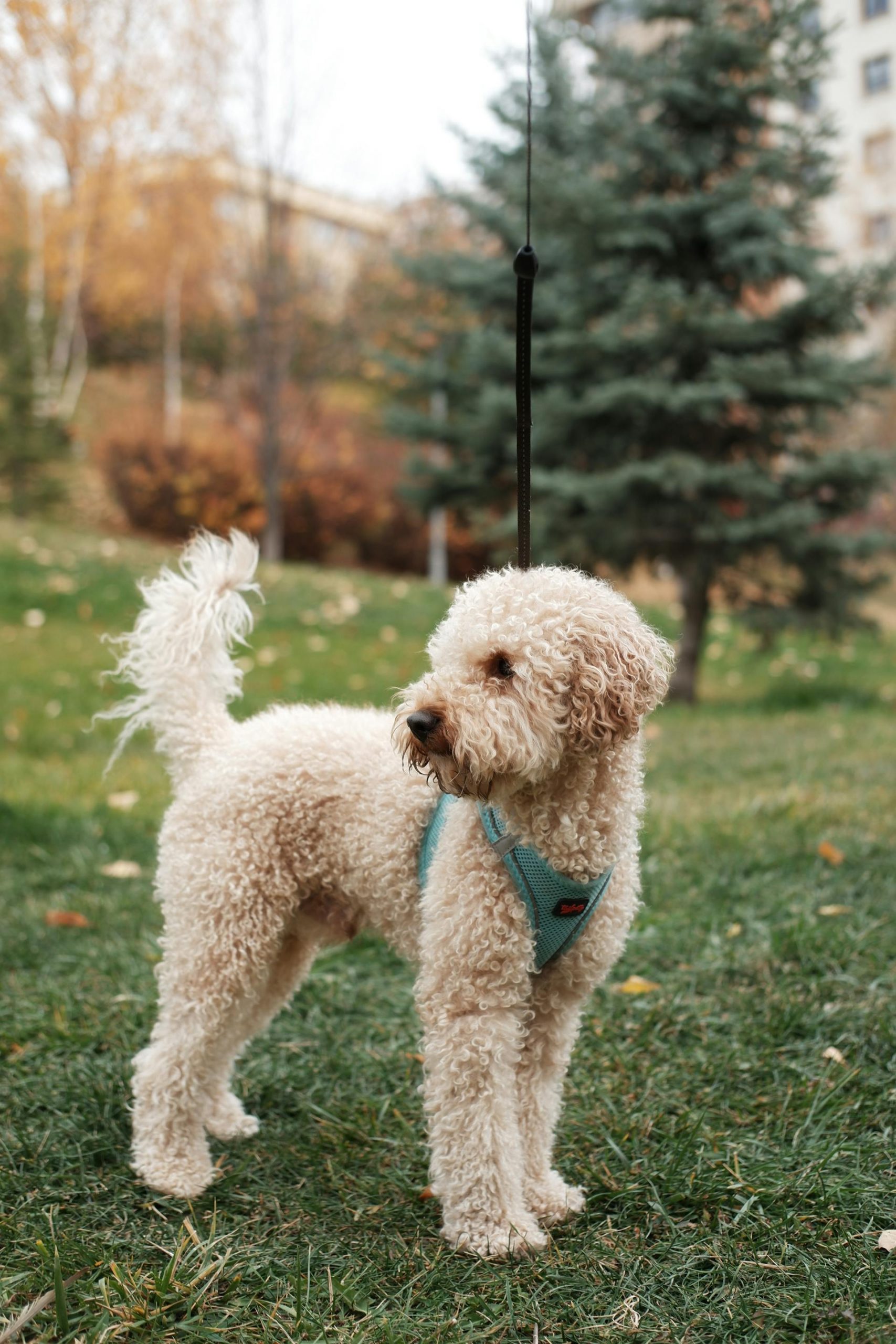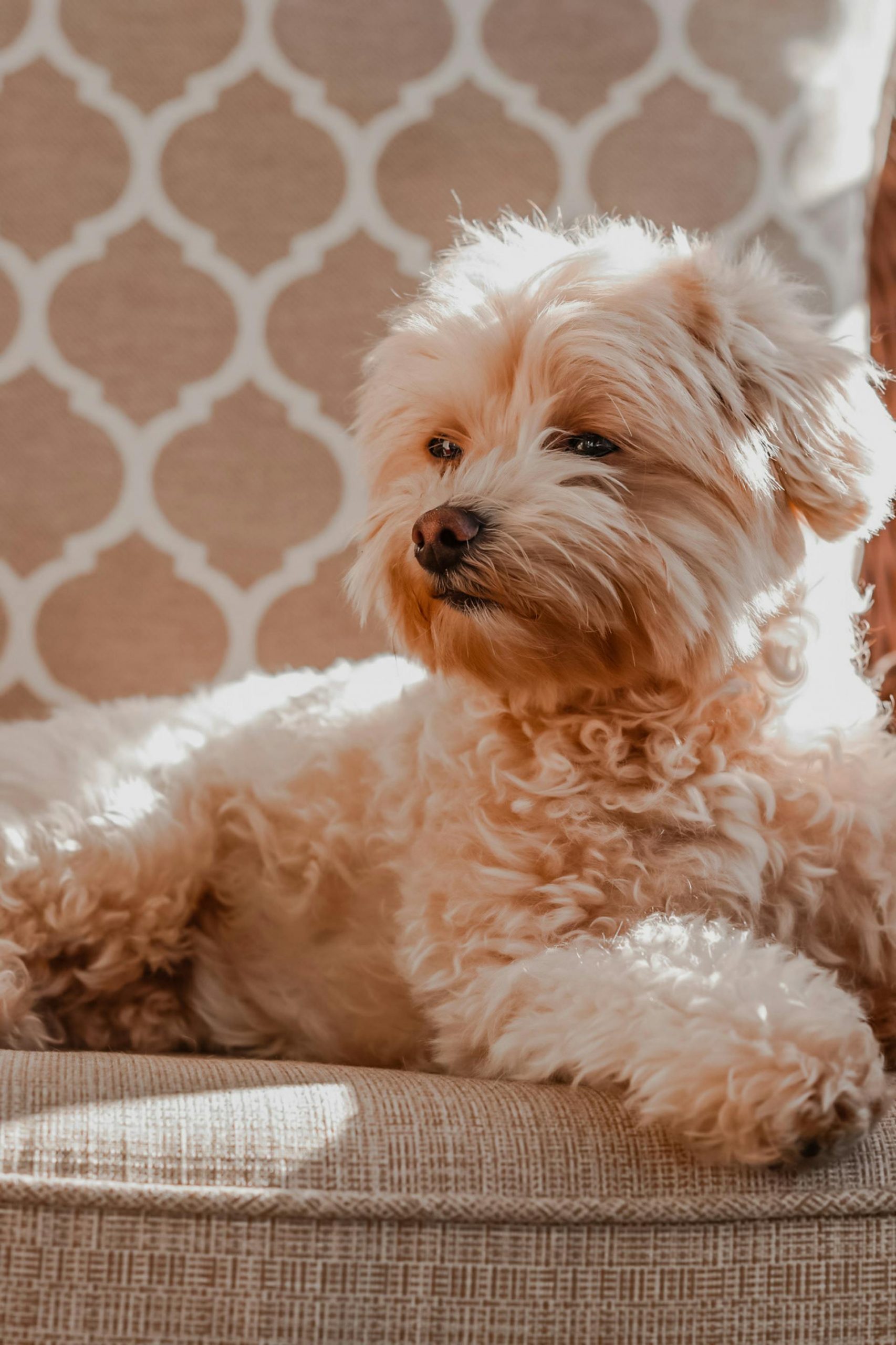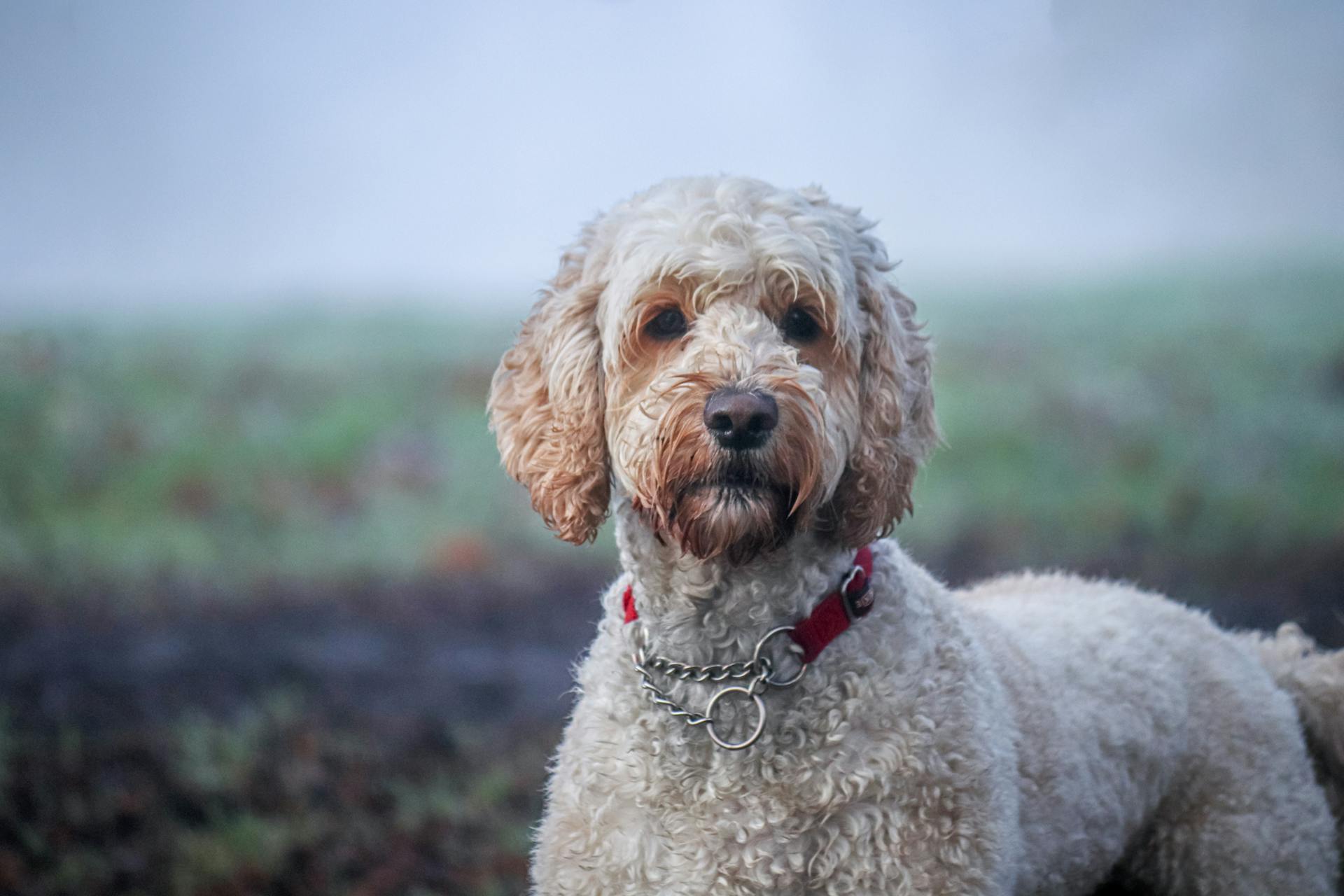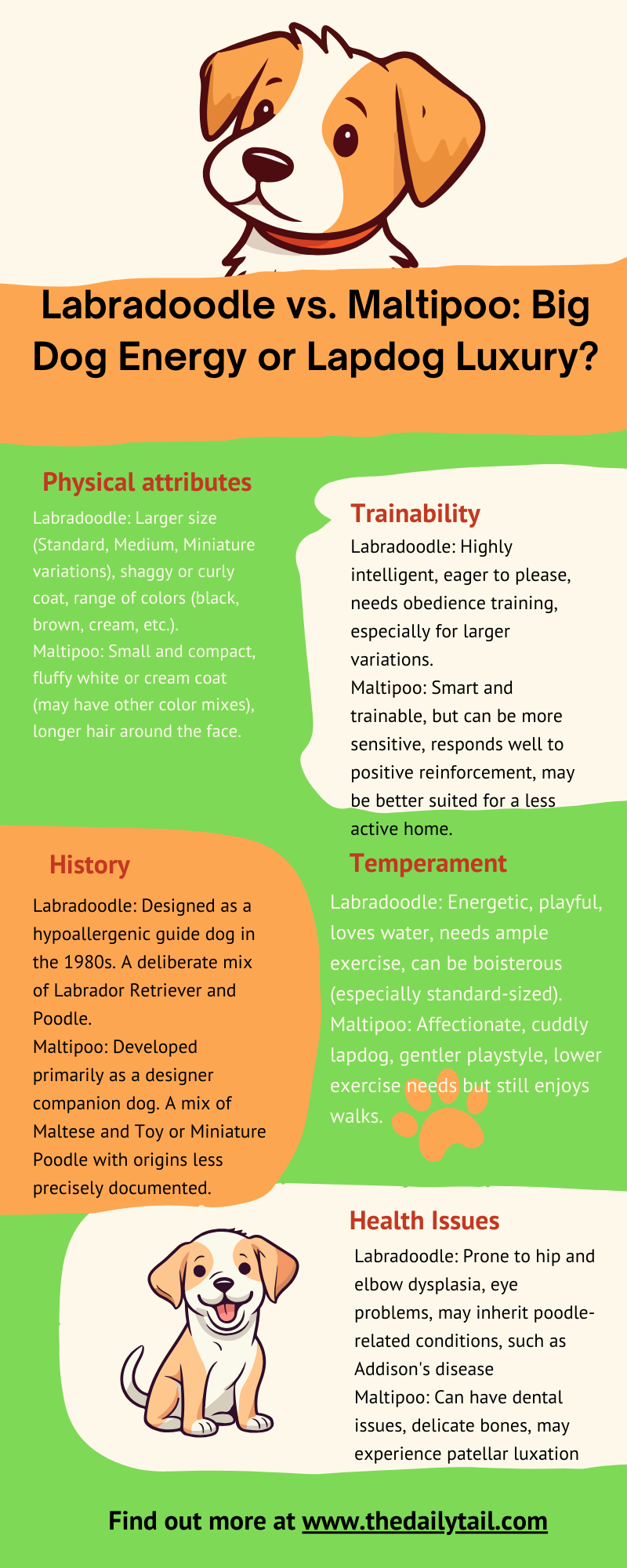As a lifelong dog owner, I know the joy of finding that perfect furry match. You’ve decided on a hypoallergenic ‘doodle’ dog, but now the tough choice: Labradoodle vs Maltipoo puppy? Having lived with dogs for almost my whole life, let me help you decide which ‘doodle’ breed is your ideal match.
Maltipoos, a blend of Maltese and Poodle, are petite and affectionate companions that can easily adapt to various living situations, making them particularly well-suited for apartment living or as companions for the elderly.
On the other hand, Labradoodles, born from the mix between a Labrador Retriever and a Poodle, are larger, spirited, and friendly dogs that thrive in active households with room to play and explore.
Both breeds share the hypoallergenic trait thanks to their Poodle lineage and possess a loving nature that makes them excellent companions. They are known for their intelligence, which speaks to their trainability and the ability to be sociable pets when properly socialized.
Future pet parents must consider their lifestyle, space, and the time they can dedicate to their pet’s care and exercise needs.
With Maltipoos generally being smaller and less active compared to the more robust and energetic Labradoodle, the choice often boils down to matching the dog’s energy level and care requirements with the owner’s capabilities and expectations.
Key Takeaways
- Maltipoos and Labradoodles are both intelligent and social breeds with hypoallergenic qualities
- Maltipoos suit smaller living spaces and less active lifestyles; Labradoodles thrive in active environments with more room
- Prospective owners should consider their lifestyle and capacity for pet care when choosing between the two breeds
Origins and History
When it comes to the Labradoodle vs Maltipoo puppy, both designer dog breeds share a rich history that blends practicality and companionship. They are the result of intentional mixing to capture the favorable traits of their parent breeds: the Poodle and the Maltese.
Labradoodle Origin
The Labradoodle made a splash in the world of dogs as a cleverly thought-out mix between the Labrador Retriever and the Poodle.
Originally from Australia, the Labradoodle’s journey began in the late 20th century. The goal? To create a guide dog suitable for people with allergies. With the Labrador’s friendly nature and the Poodle’s hypoallergenic coat, the Labradoodle was destined to be more than just a companion—they were bred to help.
Maltipoo Origin
On the flip side, the Maltipoo has a more designer dog flair, a charismatic blend of the fluffy Maltese and the intelligent Poodle. Unlike the Labradoodle dog, Maltipoo dogs can only have a Toy Poodle or Miniature Poodle parent. The Standard Poodle is too large for the standard breeders want to achieve.
The United States saw the rise of Maltipoos in the late 1990s, welcoming a breed that not only exudes cuteness but also brings along the hypoallergenic genes of its Poodle ancestry. The Maltipoo’s origins are much like a modern love story between two popular breeds joining to create a pocket-sized bundle of joy.
Physical Characteristics
When choosing between a Labradoodle vs Maltipoo, prospective pet owners often consider their physical attributes. Each breed has unique features, from size and weight to coat textures and colors, which cater to different preferences and lifestyles. It is worth noting that the American Kennel Club doesn’t recognize either hybrid dog breed. There are other Kennel Clubs for designer breeds, but not the AKC.
Size and Weight
Labradoodles are considerably larger than Maltipoos. They come in three sizes:
- Standard: Typically 22 to 24 inches tall, weighing 50 to 65 pounds
- Medium: Usually 18 to 20 inches tall, with a weight around 30 to 45 pounds
- Miniature: Often 14 to 16 inches tall, weighing 15 to 25 pounds
On the other hand, Maltipoo dogs are much smaller, often referred to as a toy or small-sized breed. Most of them:
- Stand 8 to 14 inches tall
- Weigh between 5 to 20 pounds
Their compact size makes Maltipoos a frequent choice for those living in apartments or smaller spaces. Some breeders also try to get a Toy Maltipoo, an even smaller dog.
Coat and Colors
The coats of both breeds can vary, but here are the specifics:
- Labradoodle: They possess a hypoallergenic coat that ranges from wavy to curly, inheriting the Poodle’s low-shedding properties. The common colors include cream, apricot, and black. Their hair is usually fluffy and requires regular grooming to prevent matting
- Maltipoo: Their coat is often described as soft and fluffy, which can be either wavy or curly, and sometimes straight. They also typically have hypoallergenic qualities, making them a good match for allergy sufferers. Maltipoos showcase a spectrum of colors including white, cream, and sometimes nuances of apricot. Their lightweight coat needs consistent grooming to stay clean and tidy
Temperament and Personality
Choosing between a Labradoodle dog breed and a Maltipoo dog is more than just a matter of size; their temperaments and personalities are distinctive and cater to different types of families and living situations.
Behavior Traits
Labradoodles are known for their friendly and playful nature, much like its Labrador Retriever parent. They inherit intelligence from both the Labrador Retriever and the Poodle, making them highly trainable.
Key behavior traits include:
- Energetic and active: Needs regular exercise and mental stimulation
- Sociable: Generally good with other pets and children
- Alert: May show protective behavior and can be a good watchdog
In contrast, Maltipoos are often affectionate and loving, which can make them superb lap dogs. They typically show:
- Moderate energy levels: Suitable for less active families too
- Attention-loving: Thrives on companionship and does not like being alone
- Playfulness: Enjoys interactive games which reinforce their gentle behavior
Companion Potential
With their sociable and affectionate temperaments, both breeds make excellent companions. Here’s what they can bring to a family setting:
- Labradoodles:
- Fit well in active families
- Enjoy outdoor activities and are Kid-friendly
- Loyal companions who bond closely with family members
- Maltipoos:
- Great for small living spaces like apartments
- Family-friendly demeanors that mesh well with both adults and children
- Their loving nature makes them ideal for those seeking a constant companion
Both breeds need an ample amount of attention and companionship to prevent loneliness. Proper socialization early on helps them to be well-adjusted adult dogs, ready to partake in family life with gusto and grace.
Health and Lifespan
When considering a Labradoodle or a Maltipoo hybrid dog as a pet, their health and lifespan are crucial topics to explore. Both breeds have distinct health profiles and can enjoy long lives when properly cared for.
Common Health Issues
Labradoodles and Maltipoos share some common health concerns while also having breed-specific issues.
Labradoodles may experience:
- Hip Dysplasia: A condition where the hip joint doesn’t form properly, potentially leading to arthritis or lameness
- Progressive Retinal Atrophy: An eye disorder that can lead to blindness over time
Maltipoos are susceptible to:
- Ear Infections: Due to their floppy ears, they can accumulate moisture and debris, leading to infections
- Maltipoo owners must make sure to keep their ears clean to prevent this issue
Despite these concerns, many health problems can be managed or mitigated with regular veterinary care and a proper diet.
Expected Lifespan
The labradoodle and Maltipoo breeds have relatively long lifespans compared to some other dogs, given adequate attention to their health and maintenance needs.
- Labradoodle: They typically enjoy a lifespan of 12 to 14 years
- Maltipoo: These dogs often live 12 to 15 years, and some can even surpass this range with excellent care
It’s not uncommon for a well-maintained Maltipoo to reach 16 or 17 years. Females may live, on average, one year longer than males. Regular health check-ups and a loving home environment play pivotal roles in helping these breeds reach their full lifespan potential.
Care and Maintenance
When bringing a Labradoodle or Maltipoo into their home, pet owners should be mindful of the unique care and maintenance each breed requires. Grooming needs and exercise requirements are paramount to keeping these pups happy and healthy. Depending on the coat type inherited due to their Poodle parent, these breeds might be more challenging or less challenging for grooming.
Grooming Needs
Labradoodles and Maltipoos both have coats that require regular attention, but the intensity varies by breed.
- Labradoodles often inherit the Poodle’s low-shedding coat, which means they’re less likely to trigger allergies. They typically need brushing several times a week to prevent mats and tangles and may require professional grooming every 6-8 weeks
- Maltipoos, the charming mix of Maltese and Poodle, also tend to have a low-shedding coat that combines both breeds’ soft, luxurious hair. They need daily brushing to keep their fur in top condition and avoid knotting. Regular trims can keep their coat manageable
Exercise Requirements
These breeds differ notably in their exercise needs.
- Labradoodles bring together the Lab’s enthusiasm and the Poodle’s active spirit. They require frequent, vigorous exercise to remain content. A Labradoodle thrives with daily exercise like walks, runs, or play sessions. Ideally, these should add up to 30-60 minutes
- Maltipoos have a more moderate exercise demand. A daily walk and some playtime are usually enough to keep them satisfied. Because of their small size, they can often meet their exercise needs indoors but still enjoy exploring and socializing outside
Proper care for these breeds extends beyond physical needs. Socialization and training are critical, as both breeds are intelligent and benefit from mental stimulation. They also crave attention from their families, with the need for love and care being a constant. While barking may vary between dogs, some may bark more often when they require attention or exercise. Keep the conversation with your four-legged friend lively and remember, consistent care creates a happy life for your doodle.
Training and Socialization
When it comes to training and socializing these adorable pups, there are a few things prospective pet parents should take to heart. Both Labradoodles and Maltipoos are breeds known for their intelligence and trainability, which is a big plus for first-time dog owners.
Labradoodles:
- Intelligent and Obedient: They are eager to please, making them quite obedient with consistent training
- Socialization Needs: As high-energy dogs, they require early socialization to harness their enthusiasm positively
Maltipoos:
- Smart and Sensitive: These little guys are not only smart, but they’re also quite sensitive. Patience and positive reinforcement work wonders
- Adaptability: Maltipoos have an average energy level and adapt well to various lifestyles, which makes training sessions less intense compared to Labradoodles
Table 1: Training Approaches for Each Breed
| Breed | Approach to Training | Key Traits |
|---|---|---|
| Labradoodle | Consistent and Engaging | Smart, Enthusiastic, Energetic |
| Maltipoo | Gentle, Positive Reinforcement | Smart, Sensitive, Adaptable |
Both breeds benefit greatly from early socialization. Exposing them to different people, pets, and environments helps them to become well-rounded and confident dogs. Always remember that while they may be quick learners, gentle guidance and a dash of fun can make their training sessions something they look forward to! Remember, every pup has a unique personality, so while they share common traits, their individual temperament will shine through in training.
Adaptability to Lifestyle
When choosing between a Labradoodle and a Maltipoo, it’s essential to think about how they’ll fit into your day-to-day life. It’s like picking a new friend—you want to make sure they enjoy the same things you do!
Labradoodles are a mix between a Labrador Retriever and a Poodle, and they bring a lot of energy to the table. They’re the pals you’ll want alongside when you go jogging or hiking. Since they thrive on activity, they match best with an active lifestyle. Regular exercise isn’t just a bonus for them; it’s a must. However, for people living in apartments, they may not be the ideal choice unless you can commit to plenty of outdoor adventures.
Maltipoo dogs, on the other hand, are a Maltese and Poodle combo and are more flexible when it comes to living spaces. They’re sort of the cozy lap dogs that can live it up in an apartment just fine. They still need their daily exercise, but a brisk walk or a playful session indoors often does the trick.
With both breeds, attention is key. They adore their humans and can experience separation anxiety if left alone for too long. If you’ve got a busy work life, making sure they get enough love and possibly considering a dog sitter or daycare can prevent anxiety and keep them happy.
Here’s a quick glimpse at their adaptability factors:
| Factor | Labradoodle | Maltipoo |
|---|---|---|
| Requires Exercise | High | Moderate |
| Apartment Living | Possible, with effort | Well-suited |
| Attention Needs | High | High |
| Separation Anxiety | Common | Possible |
| Adaptability | Active homes preferred | Flexible |
Comparison and Considerations
When considering bringing a furry companion into the home, it’s helpful to weigh factors such as each breed’s traits, how they fit into family life, and their needs in terms of care and living conditions.
Labradoodle vs Maltipoo
The Labradoodle and Maltipoo are both popular mixed breeds, each with its own unique characteristics. Labradoodles tend to be larger as they’re a cross between a Labrador Retriever and a Poodle, weighing up to 65 pounds. In contrast, Maltipoos are smaller, usually a mix of a Maltese and a Toy or Miniature Poodle, with a weight range of 5 to 20 pounds.
| Trait | Labradoodle | Maltipoo |
|---|---|---|
| Size | Medium to large (up to 65 pounds) | Small (5 to 20 pounds) |
| Popularity | Very popular, especially in families | Gaining popularity, especially among those living in apartments or with space limitations |
| Hypoallergenic | Often hypoallergenic, suitable for those with allergies | Also frequently hypoallergenic, appealing to allergy sufferers |
Labradoodles might be more suitable for energetic families or individuals who can meet their exercise needs. Maltipoos can be a better choice for those seeking a smaller, perhaps more manageable pet, perhaps with less space for a larger dog.
Choosing the Right Breed for You
They say a dog is a man’s best friend, and choosing the right one is about harmony and a shared lifestyle.
Those considering rescue options can often find both Labradoodles and Maltipoos in need of loving homes. The price can vary greatly. Factors like pedigree and whether you are adopting from a rescue play a role.
- Family-Friendly & Kid-Friendly: Both dog breeds are known to fare well with families. The sturdy size of the Labradoodle may be better suited for households with older children
- Apartment Living: If one is limited on space, Maltipoos might adapt better to apartment living due to their smaller size
- Breed Popularity: Both are in demand, but the right choice depends on the adopter’s lifestyle and what they seek in a companion
For those with allergies, the hypoallergenic qualities present in both breeds may significantly influence their decision.
Price and rescue options also contribute to finding a pet that doesn’t just fit into the family, but feels like part of it too.
As dog owners soon learn, it’s less about the breed and more about the bond.
Choosing isn’t just about preference; it’s about who they are, the care they can give, and above all, the love they’re ready to share.
Each dog breed has its heart and spirit, ready to match the pulse of their new home.

